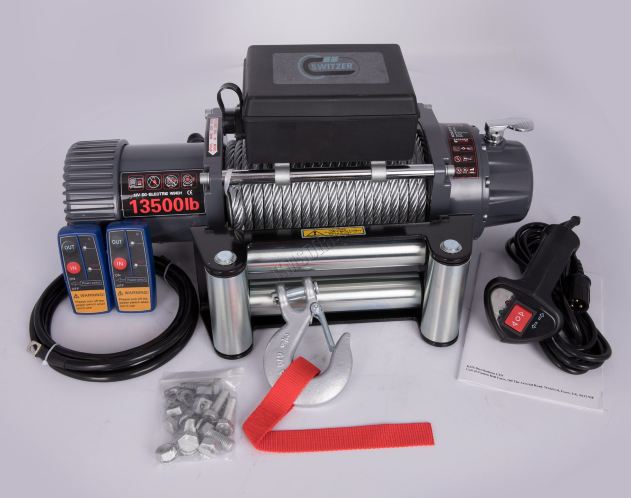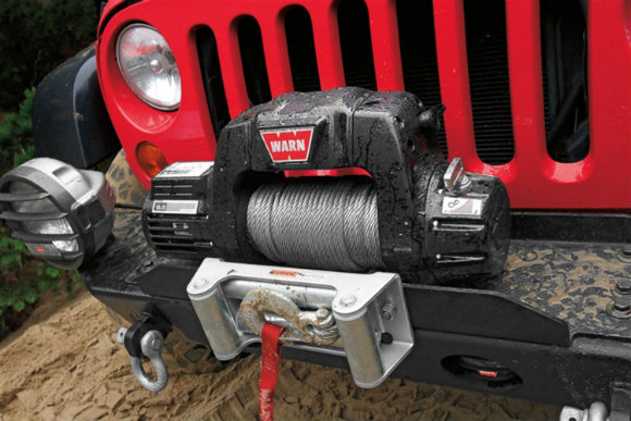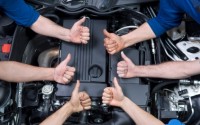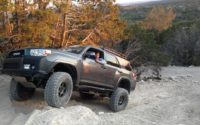Everything You Need to Know to Find the Ideal Electric Winches
Preparing to tackle one of the dozens of popular 4WD trails littered across Australia? Or maybe something more difficult, deep in the heart of the bush? You’ll want a 4WD that can handle any type of terrain and is equipped with a few necessities. Supplies for the duration of the trip, as well basic recovery gear. It’s not a question ‘if’ you get stuck, but more of ‘when’ you get stuck that this gear will come into use. Shackles, snatch straps and recovery tow points are all good for minor ruts, and when you’ve got the help of a mate. But when going out alone, and in a single-vehicle, you’ll want a well-appointed winch.
Why Winches?
A winch is a lifesaver. If you get stuck far from home and no one to help out, this is what you’ll use. It fits into the winch cradle and is bolted on the front of the chassis. If you’ve also looking to get bull bars for your rig, then look for one that is winch compatible. You’ll need a winch sooner than later, so having one ready means you’ve done the maths as to what to expect when heading out into the Outback.

source: 4x4venhicles.com
Parts of a Winch
Hydraulic winches are fitted to bigger vehicles. For utes though you’re good with an electric winch. This should have enough pulling power to get your 4WD out of any ditch. To do this, winches use the power supplied from the car’s battery (or better still, a secondary battery).
Winches consist of several parts. Knowing your way around a winch will make installing and using one easier. The working part of the winch is the motor. Looking at a winch head-on, this is often the part furthest left. Motors come as either 12 or 24V. They’re tasked to pull the drum, around which the winch cable is wound. Inside the same housing, you’ll often find the control box (though you’ll also find separate control boxes). This contains the circuitry that controls the motor, and is fed power from the 4WD’s battery. The drum is the central part of the winch. Inside the drum is a braking system, which prevents the cable from freely spooling out once the motor is shut off. To the right of the drum are the gears and clutch. Gears regulate the speed at which the motor pulls on the cable. The lower the gear ratio, the faster the operation. The clutch lever allows you to disengage the winch drum from the winch gears so you can manually pull out the cable to the desired length. Once that’s done set the lever back to lock the drum onto the gears again.
The parts listed above sit on the winch mount that bolts onto the car. The mount also houses the fair lead. This is the part that allows the cable to be pulled out and retracted at any angle without tangling. There are two types of fairleads – a hawse and roller fairlead. Roller fairleads stick out a little more, so limit the angle at which you can recover the vehicle. Both types come in (steel or aluminium) variants that are suited to both steel and synthetic cables. Lastly, at the end of the cable is the hook.

source: 4x4venhicles.com
Getting the Right Winch for Your Needs
There are a few things to note before buying your next winch:
Pulling Capacity – this refers to the weight the winch can pull. It can be stated either in kilograms or pounds (divide by 2.2 to get kgs). When considering a winch, always go for the largest pulling capacity your budget allows. And when calculating weight, this will include the vehicle, fuel and all your gear. Another addition that helps bigger 4WDs is a snatch block. This relieves the strain of a winch that is reaching the limits of its pulling capacity.
Cable or Rope? – Cables are steel; ropes are synthetic fibres. Steels cables are the traditional choice, but are steadily being phased out by synthetic winch lines. The advantages of steel cables are that they are relatively cheaper, endure less damage in tougher terrain (when scraping against rocks, or immersed in mud or deep sand) and are generally easy to maintain. The downsides though can make you consider the alternative. Steel cables in an electric winch add to the already substantial weight on the vehicle up front. In addition, they can splinter and crack (due to lack of flexibility) and can pose a real safety risk if they break. Repairing one is also a chore. Steel is more prone to rust, so not well suited to water.
Synthetic rope winch lines were first seen in the 1990s. They are much lighter than cables with the same rated pulling capacity, have higher breaking points, and the flexibility means they store less kinetic energy in the recovery of the vehicle. This is important in that if a synthetic rope should snap, it won’t be as dangerous as a steel rope. But still, be aware. The rope is also easier to manage in the drum, and won’t kink like steel. It holds its own when in water too. The downsides relate to the higher cost, and more frequent maintenance and cleaning. A synthetic rope also won’t last as long as steel against sharper surfaces.
Another thing to consider is the convenience of remote operation. This enhances safety, letting you recover a bogged 4WD at a safe distance. Also, take into account the length of the cable or rope.
Other Necessities
I mentioned snatch blocks in halving the weight the winch has to pull. There are also other necessities that come in handy. Winches are often used with straps and shackles that are connected to the tow points of the other vehicle that is being recovered. These also need to be rated at least double the overall weight of the vehicle. To dampen the winch cable or rope in the event it snaps, a winch damper is placed on top of the line. It is tasked to hurl the line to the ground if worse comes to worst. Other useful items include a tree strap, to protect the bark of the tree that’s assisting in the recovery process, as well as a winch extension strap when the cable or rope is just not long enough.



